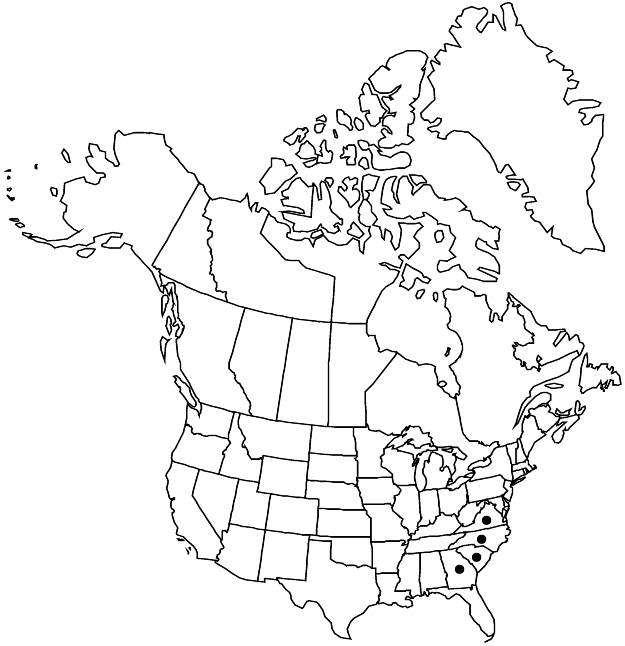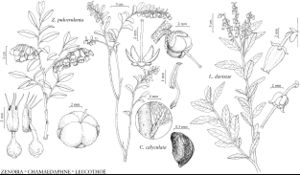Zenobia pulverulenta
Bull. Torrey Bot. Club 22: 232. 1895 ,.
Plants 1–2 m, rhizomes extensive. Leaves: petiole 3–6 mm; blade 2–8 (–10) × (0.5–) 1.2–4.5 cm, base cuneate to rounded, apex acute, apiculate, rounded, or retuse. Pedicels: bracteoles absent. Flowers fragrant; sepal lobes triangular; corolla 6.5–10 mm; nectariferous disc 10-lobed; ovary 5-lobed. Capsules erect, 3.2–5 × 4.8–6.5 mm. Seeds ca. 1 × 0.5 mm, not winged. 2n = ca. 66.
Phenology: Flowering spring.
Habitat: Damp, sandy, or peaty pine savannas, shrub bogs, natural depression ponds, and swamp margins
Elevation: 0-100 m
Distribution

Ga., N.C., S.C., Va.
Discussion
Some forms of Zenobia pulverulenta have been recognized. Plants with glaucous leaves and twigs occur primarily in the Sandhills region of North Carolina and South Carolina (inner coastal plain); nonglaucous plants occur primarily eastward. Zenobia is cultivated occasionally outside its native range as far north as Massachusetts. It is particularly appropriate for garden areas with wet soil. The flowers are anise-scented.
Selected References
None.
Lower Taxa
"/4" is not declared as a valid unit of measurement for this property.
